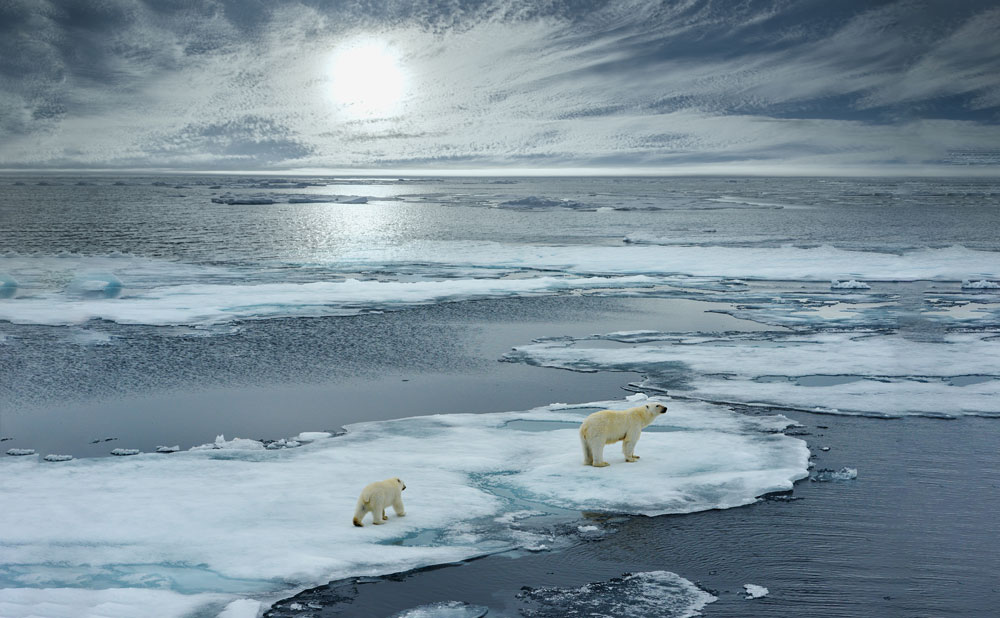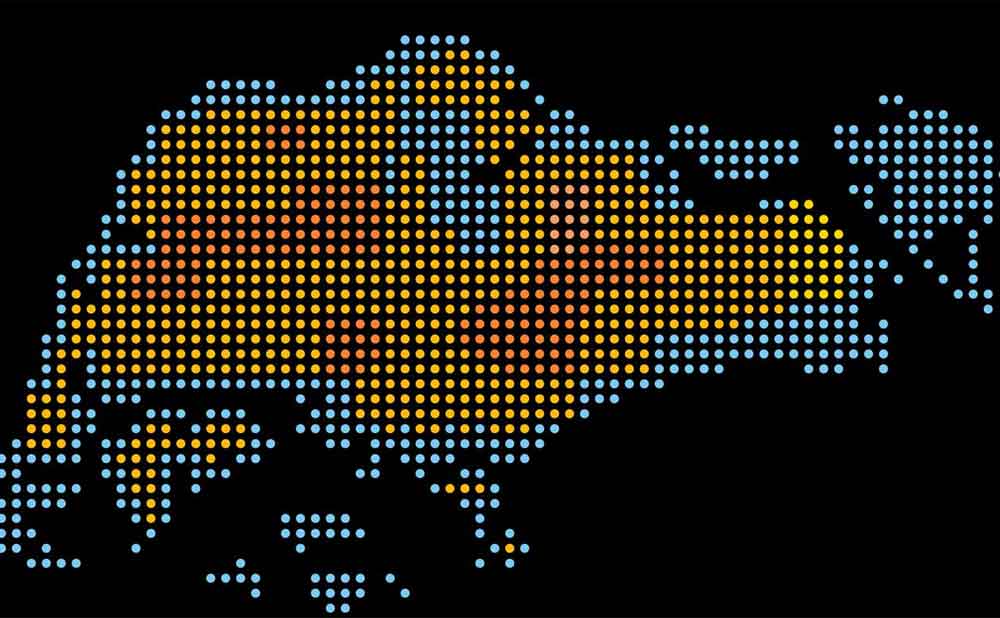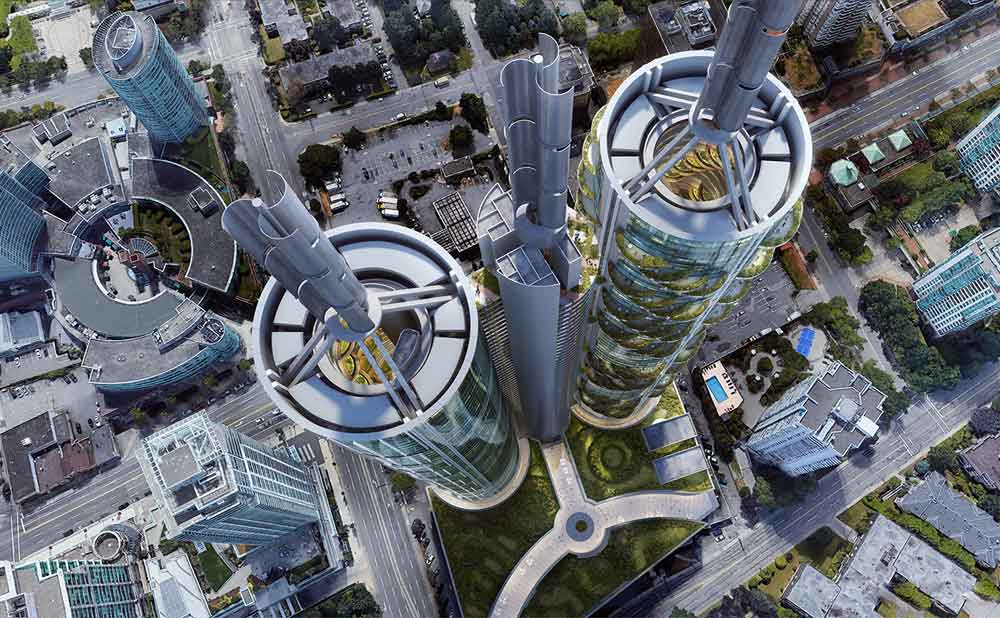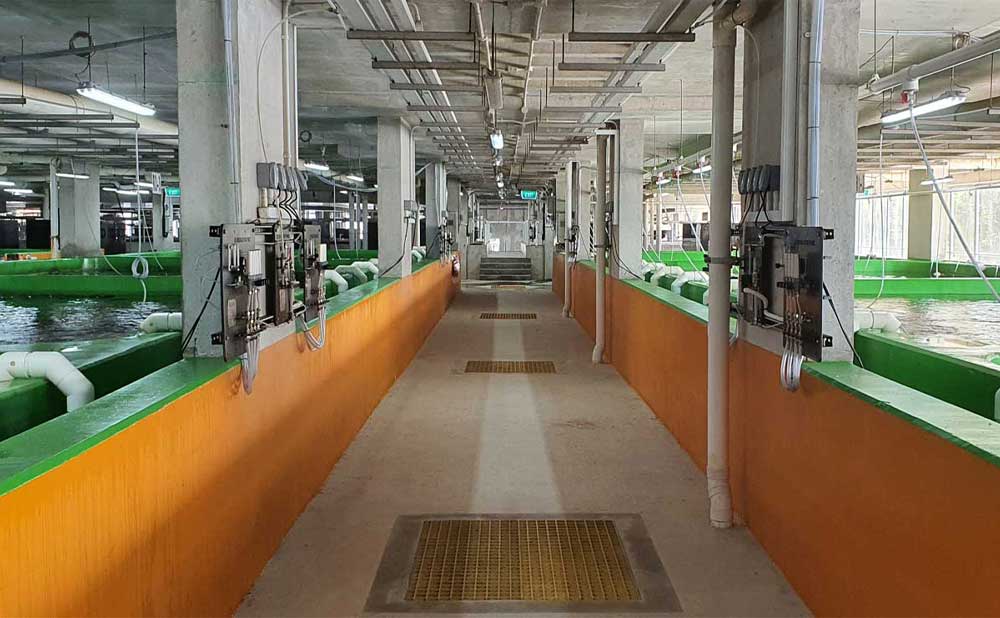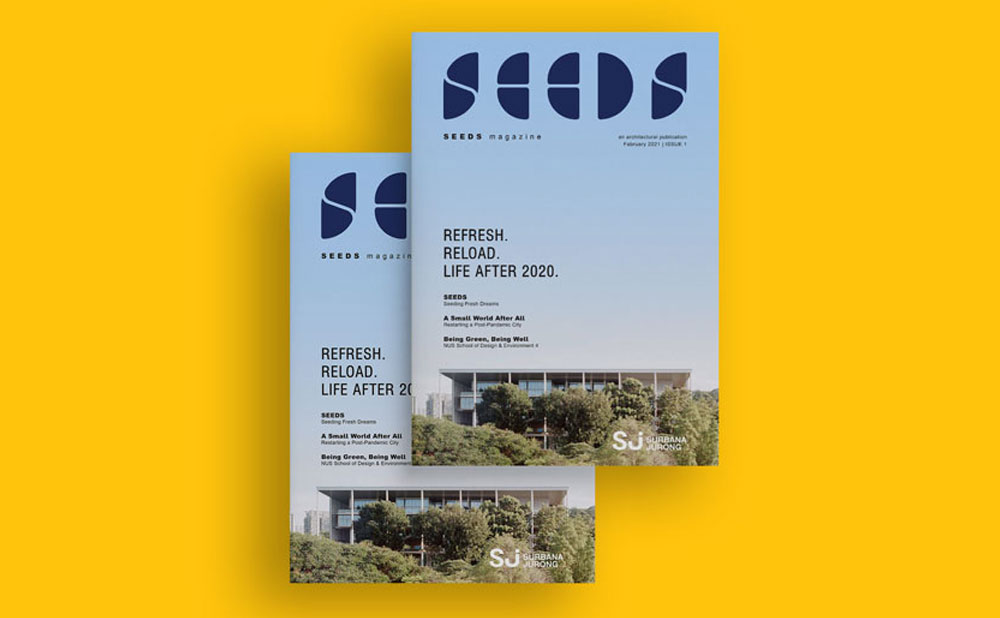Abstract: Immediate and resolute action is needed to avert climate catastrophe, and design consultants have to
prioritise environmental design, even over what the client immediately requires, argues Patrick Bellew, the founding
director of environmental design consultancy Atelier Ten, a member of the Surbana Jurong Group. Design
consultants risk becoming irrelevant if they lack skills in sustainability design. Starting with asking questions based on
first principles, designers should seek to eschew re-applying familiar solutions and boldly innovate with new
questions, new materials to arrive at more sustainable solutions. By developing consistent and verifiable processes
to help clients make the right decisions in the face of complex climate challenges, designers can empower
themselves to better drive change in the supply chains that we engage with across the world.
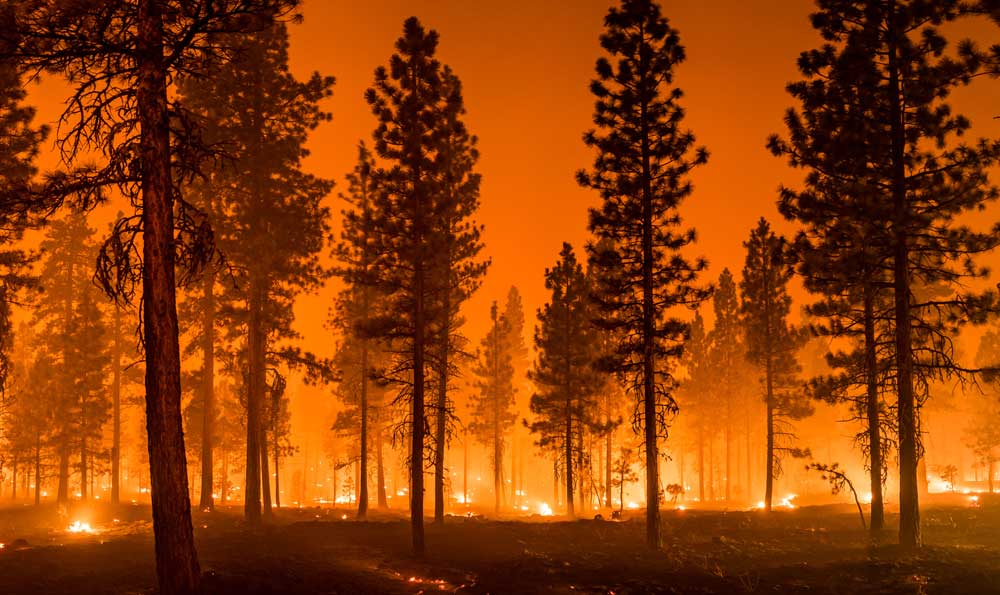
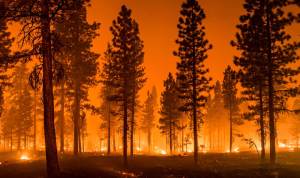
Raging wildfires which have burnt down swathes
of pristine forests
across the world
across the world
Global Perspective on Climate Change and Sustainability – A design consultant’s view.
The news has been filled with
a succession of reports of catastrophic extreme
climate events. Record temperatures and wildfires
raging in Turkey, Greece and in 13 western American
States consuming a reported 1.3m acres, wildfires in
West and Central Canada, a year of rainfall in three days
in Zhengzhou leading to huge floods in Henan province,
and the deaths of 196 people in Germany and Belgium
due to a stationary storm system causing unprecedented
summer rainfall across northern Europe.


Raging wildfires which have burnt down swathes
of pristine forests across the world
Global Perspective on Climate Change and Sustainability – A design consultant’s view.
The news has been filled with
a succession of reports of catastrophic extreme
climate events. Record temperatures and wildfires
raging in Turkey, Greece and in 13 western American
States consuming a reported 1.3m acres, wildfires in
West and Central Canada, a year of rainfall in three days
in Zhengzhou leading to huge floods in Henan province,
and the deaths of 196 people in Germany and Belgium
due to a stationary storm system causing unprecedented
summer rainfall across northern Europe.

Raging wildfires which have burnt down swathes
of pristine forests across the world
Global Perspective on Climate Change and Sustainability – A design consultant’s view.
The news has been filled with
a succession of reports of catastrophic extreme
climate events. Record temperatures and wildfires
raging in Turkey, Greece and in 13 western American
States consuming a reported 1.3m acres, wildfires in
West and Central Canada, a year of rainfall in three days
in Zhengzhou leading to huge floods in Henan province,
and the deaths of 196 people in Germany and Belgium
due to a stationary storm system causing unprecedented
summer rainfall across northern Europe.
All of these events serve to highlight the necessity for immediate and resolute action from all of us – we have a
responsibility as the temporary custodians of planet Earth to do everything that we can to avert the impending climate
catastrophe.
That is why the leadership of Surbana Jurong are so determined that Sustainability will be at the heart of everything we do in the coming years.
That is why the leadership of Surbana Jurong are so determined that Sustainability will be at the heart of everything we do in the coming years.
“Change is constant, change is normal.”
When Buckminster Fuller wrote this in the 1960’s, he was paraphrasing Heraclitus from 500BC.
Bucky was one of a group of environmental thinkers in the mid-20th century who tried to warn us that all was not well with the world and that industrialisation and population growth would damage our fragile eco-systems if we didn’t pay attention to the feedback. An engineer and polymath, with a penchant to over-talk and over-write on his favourite subjects, he wasn’t specifically referring to climate change in this quote, he was alluding to the fact that mankind has needed to adapt to changing circumstances for as long as we have been around and have successfully done so through the resourceful application of engineering, science and technology. We need to do so again now.
His various writings about sustainability, including his “Operating Manual for Spaceship Earth” in 1969, predicted the ecological and climate disaster that we now face. It was perhaps not so hard to see it coming, even in the 1950’s and 60’s and it is undeniable that the environmental movement has been predicting these problems for more than half a century, but the wider world is only now really waking up to them as the climate crisis begins to really take hold.
Bucky was one of a group of environmental thinkers in the mid-20th century who tried to warn us that all was not well with the world and that industrialisation and population growth would damage our fragile eco-systems if we didn’t pay attention to the feedback. An engineer and polymath, with a penchant to over-talk and over-write on his favourite subjects, he wasn’t specifically referring to climate change in this quote, he was alluding to the fact that mankind has needed to adapt to changing circumstances for as long as we have been around and have successfully done so through the resourceful application of engineering, science and technology. We need to do so again now.
His various writings about sustainability, including his “Operating Manual for Spaceship Earth” in 1969, predicted the ecological and climate disaster that we now face. It was perhaps not so hard to see it coming, even in the 1950’s and 60’s and it is undeniable that the environmental movement has been predicting these problems for more than half a century, but the wider world is only now really waking up to them as the climate crisis begins to really take hold.
The ‘Trimtab’ Theory for a Complex Challenge
Bucky was also a firm believer in the power of the individual to precipitate change. I first read his ‘trimtab’ theory at
University in the 1970’s and it has stayed with me since it. A trimtab is a small mechanism on the rudder of a large
ship that when moved generates low pressure on one side, pulling the rudder around and ultimately turning the
whole ship.
'Trimtab' Theory: A small action generating a disproportionately large outcome. The metaphor for us all, as designers and influencers in the modern world, is clear and direct. We all have our role to play and even seemingly small and trivial decisions in our daily working lives can multiply into a force for change.
As Bucky would have said, we can all be Trimtabs. At
Atelier Ten we certainly try to be.
It would be great if it was just that simple, but the complexity of the global eco-system coupled with our insatiable appetite for fossil fuels to power our lives results in a problem of labyrinthine complexity that needs extraordinary focus at all levels, governmental, commercial and individual to unpick. There is a bewildering array of issues that sit under the banner of ‘sustainability’, and a wealth of advice out there on how we can be better. It can get very confusing to even know where to start as there are so many measures and standards that can be applied to working more sustainably.
It would be great if it was just that simple, but the complexity of the global eco-system coupled with our insatiable appetite for fossil fuels to power our lives results in a problem of labyrinthine complexity that needs extraordinary focus at all levels, governmental, commercial and individual to unpick. There is a bewildering array of issues that sit under the banner of ‘sustainability’, and a wealth of advice out there on how we can be better. It can get very confusing to even know where to start as there are so many measures and standards that can be applied to working more sustainably.
Beyond the Client Brief
Atelier Ten has a thirty-year track record of advocating for performance driven design while designing and delivering
high performance green buildings. Now, as part of the Surbana Jurong Group, we aim to continue to bring issues of
climate change and sustainable design to the top of the agenda. In our time as a business, we have seen the role of
environmental designer grow in importance and influence in the professional world as Clients raise their ambitions
and demand more. However I also see that, while Sustainability has been a critical issue and differentiator for some,
it has by no means been a universal view and in many markets, including much of Australasia, the approach of
designers has been that “we will prioritise sustainability when the Client demands it of us”.
This passive approach can no longer be seen as acceptable and we need to aspire to reach a point where project decisions are all influenced by sustainable as well as financial and technical thinking. We also need to understand that sustainability is increasingly a key value driver in the commercial world we work in and we will become less relevant and even perhaps redundant if we are not both literate and skilled in this space.
This passive approach can no longer be seen as acceptable and we need to aspire to reach a point where project decisions are all influenced by sustainable as well as financial and technical thinking. We also need to understand that sustainability is increasingly a key value driver in the commercial world we work in and we will become less relevant and even perhaps redundant if we are not both literate and skilled in this space.
Focus Areas of Sustainability to Pursue for SJ
To really be able to deliver on such ambition we all need to put our own houses are in order – how can we advise
others how to be better if we cannot look to ourselves and be confident that we are doing all that we can to ensure
that we hold ourselves to the same values that we espouse? All businesses need to strive, measure and
communicate how they are reducing impacts and carbon emissions across the board. We need to move on this
quickly. Atelier Ten and Surbana Jurong are signatories to the World Green Building Council Zero Carbon challenge and we are committing
to the Race to Zero campaign in 2021 to underscore this commitment as an operation.
For us all as designers, the 17 UN Global Sustainable Development Goals break things out into broad categories all of which are important to an holistic sustainability vision, but for much of our day-to-day business the target areas set by the World Green Building Council would bring us more focus as we establish our way of developing and delivering exemplary design solutions in the various areas in which we work. These three major focus areas are:
For us all as designers, the 17 UN Global Sustainable Development Goals break things out into broad categories all of which are important to an holistic sustainability vision, but for much of our day-to-day business the target areas set by the World Green Building Council would bring us more focus as we establish our way of developing and delivering exemplary design solutions in the various areas in which we work. These three major focus areas are:
- Climate action
- Health and wellness
- Resource and circularity

The three Target Areas identified by the World Green Building Council
World Green Building Council
World Green Building Council
We have designers and consultants within the SJ Group working across all of the built environment sectors which
effectively encompass all of these and so there are great opportunities for us to implement radical change in all of
them. Without wishing to pigeonhole, one might immediately see that our Structural and Civil Engineering
organisations could be most interested in prioritising expertise in resource use and circularity for example, and we
have some excellent and inspiring projects within the Group that we can reference, learn from and build upon. As well
as advisory and ESG experience, we have a broad range of knowledge in emerging technologies including large
scale solar PV on land and water, hydro at all scales, intercountry scale power transmission, smart network systems
and seawater greenhouse technology as well as experience in battery storage and the emerging hydrogen market.
All of these will likely play a part in the story of the next 25 years.
While engineers and designers are often seen as innovators (and we often are), there is a lot of what we do as design consultants that is about the unquestioning re-application of things that we have done before. It is often easier and more cost effective to repeat familiar decisions and ways of working and specifying than it is to challenge ourselves to rethink how they might be done in a more sustainable way. We must turn our creativity to not just being less bad, but to being a force for good
While engineers and designers are often seen as innovators (and we often are), there is a lot of what we do as design consultants that is about the unquestioning re-application of things that we have done before. It is often easier and more cost effective to repeat familiar decisions and ways of working and specifying than it is to challenge ourselves to rethink how they might be done in a more sustainable way. We must turn our creativity to not just being less bad, but to being a force for good
Growing from First Principles: The Example of Gardens By The Bay
When we started out with the design of the Gardens by the Bay in Singapore, (which was designed in 2007-8 and
completed in 2012), there was really no ‘playbook’ as to how to begin to design glass buildings on this scale on the
equator. So, we started from first principles and studied how we could balance the competing requirements of
daylight, sunlight, human comfort and energy to create a suitable environment for both plants and people without
huge carbon emissions. Our studies led to many design decisions that were driven by the energy use and
performance – our computational fluid dynamics modelling allowed us to fully assess the use of radiant slab cooling
and displacement conditioning and we ‘borrowed’ liquid desiccant air drying technology from cold storage facilities in
humid countries to remove moisture from the outdoor air to make it more European than tropical. Then we looked at
solar energy to strip moisture back out of the desiccant, but during the design process we discovered a waste stream
from the Singapore tree management programme that presented us with a biomass solution for heat, chilled water
and power production and the Supertrees were there to conceal the exhausts and vents that the system required.
This is what we would now think of as a circular economy solution intercepting a waste stream and putting it to a
positive use.
The outcome is an exemplary project with a unique and compelling environmental story.
All projects that have a carbon impact (which is all projects) should be subjected to the same kind of rigorous unpacking and analysis of brief to seek out the opportunities in an open-minded way.
The outcome is an exemplary project with a unique and compelling environmental story.
All projects that have a carbon impact (which is all projects) should be subjected to the same kind of rigorous unpacking and analysis of brief to seek out the opportunities in an open-minded way.
Balancing Before, the Now and the Ever After
We also need to question the near and distant impacts of our decisions as designers. We see this as an increasingly important part of comprehensive sustainable design and thinking which cannot exist in our business without a profound consideration.
When we select and specify a material for a project, how do
we consider its environmental provenance? Up until now we
have become familiar with working with timber rated by the Forest Stewardship Council,
avoiding CFC’s and HCFC’s and other ozone depleting
products. Embodied carbon has become the proxy for this
type of analysis but it is a very complex subject and the ‘right’
answer varies greatly in different parts of the world. We need
to develop consistent and verifiable processes to help both
ourselves and our clients to make the right decisions in the
face of this very important question. This is expertise that we
need to have, and we can drive change in the supply chains
that we engage with across the world by demanding
answers to these questions. The campaign to remove
CFC’s from the global refrigeration and materials industry is
a great example of what we can do when we put our minds
to it.
At this point, it is worthwhile to look up and read Leonard Read’s delightful short essay “I, Pencil” from 1958, the year
before I was born. It exemplifies the issues of materiality and complexity more succinctly, persuasively, and effectively
than I could ever write, describing the technical wonders involved in the manufacture of this seemingly straightforward
object.
For me, it articulates the nub of the problem that we face now when ‘unpacking’ our projects and trying to understand the near and distant impacts of our decisions and actions as I described above. It also reinforces my earlier reference to the possibility, and importance, of invention without coercion – self-imposed decision-making as opposed to waiting for regulation to enforce change. As individuals we have it in us to do the right thing without anyone having to tell us what to do.
As a final thought, despite what we may think now, by the end of this century, 2021 will almost certainly be thought of as a comparatively ‘cool’ year. There is trouble ahead and we need to act now in our many markets and sectors to mitigate the impacts of our projects.
One final piece of Bucky wisdom:
For me, it articulates the nub of the problem that we face now when ‘unpacking’ our projects and trying to understand the near and distant impacts of our decisions and actions as I described above. It also reinforces my earlier reference to the possibility, and importance, of invention without coercion – self-imposed decision-making as opposed to waiting for regulation to enforce change. As individuals we have it in us to do the right thing without anyone having to tell us what to do.
As a final thought, despite what we may think now, by the end of this century, 2021 will almost certainly be thought of as a comparatively ‘cool’ year. There is trouble ahead and we need to act now in our many markets and sectors to mitigate the impacts of our projects.
One final piece of Bucky wisdom:
“You never change things by fighting the existing reality. To change something, build a new
model that makes the existing model obsolete”.
All of us need to heed this wisdom and turn our skills to building new models that shape a more
sustainable world.
About the SEEDS Journal: Started by the architectural teams across the Surbana Jurong Group in Feb 2021, this is a platform for sharing perspectives on all things architectural. SEEDS epitomizes the desire of the Surbana Jurong Group to enrich, engage, discover and share ideas among the Group’s architects in 40 countries, covering North Asia, ASEAN, Middle East, Australia and New Zealand, the Pacific Region, the United States and Canada.
Articles at a glance




